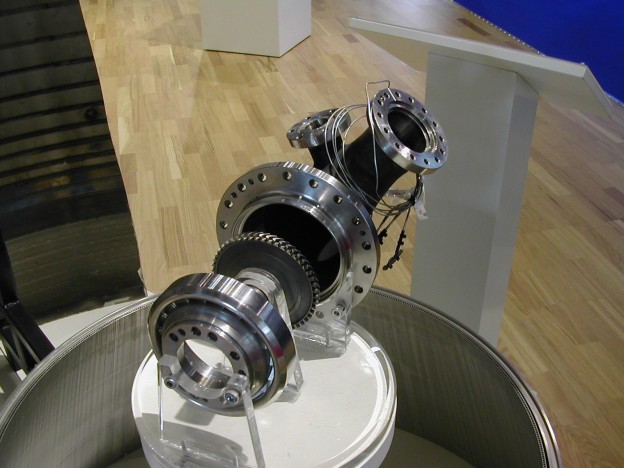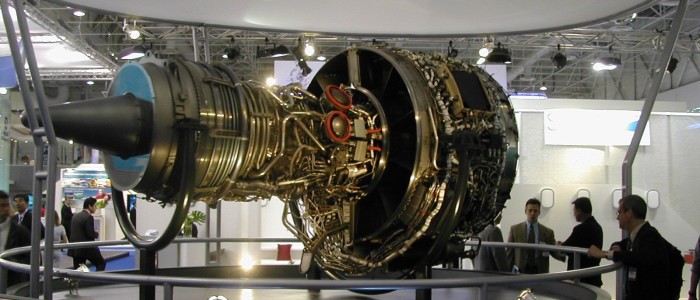The Norwegian based company Norsk Titanium AS (NTi) has developed a plasma-arc-based direct metal deposit technology that can produce aerospace-grade parts from titanium wire.
Complicated engine constructions for airplanes and space applications are mostly cut from large blocks of metal, a slow and demanding material, not to mention an expensive method, however, 3D printing of such constructions will prove to revolutionize these constructions. This method has been under development for many years, however, the high quality demands special types of material, and the aerospace industry naturally requires and demands nothing but the best, consequently, the demands are hard to face up to. Nevertheless, the market many now finally open up to new technology.
Norsk Titanium (NTi) has gained a good foothold within the aerospace industry through development of very hopeful methods of printing of constructions in titanium. Titanium is, together with carbon fibre, two new materials that have revolutionized the aircraft industry, titanium in the engines and carbon fibre in the fuselage.
The technique is developed at NTi’s own plant in Norway, but in a partnership with the state of New York they will build a dedicated production facility north of the state’s capital city, Albany. Investing nearly 125 million dollars, New York has decided to be a part in this venture . The facility will be built and owned by the state, but leased and operated by NTi. The capacity will be 1,000 tons of titanium parts a year by 2018.
Revolutionize the Material and Time Consume

Engine parts very suitable for 3D printing. Credit: NordicSpace
For traditional production the weight ratio between the raw material to the finished part is very high and the machining process is very expensive. However, the printing of near-net parts the process will eliminate 70-75% of the cost. A printed raw product is quite similar to the final product and the remaining process is nearly only a finishing touch. The same is true for the time consummation, however, the difference in cost and time together, between old and new methods, the savings will have a ratio of 10-20 to 1. The cost savings for one aircraft producer will immediately force others to use the same method and the market will expand very quickly.
The market is rather big. In a Boeing 787 it is estimated that there are 1000 parts in Titanium. It is also estimated a cost saving at 2,500 dollars per part, or 2.5 million dollars per aircraft, nearly an industrial revolution.
The new methods is developed by the Norwegian based company Norsk Titanium AS, and the company now has to produce nearly 2000 parts for the test. The unique production machinery is mainly developed by the Norwegian Tronrud Engineering AS and the company is also chosen to deliver the parts and machinery for the commercial production, but first of all the main goal now is primarily to produce three machines for the test production.
To the American periodical “Aviation Week and Space Technology”, president and GEO Warren Boley, pointed out that the new facility will be able to produce 1000 tons of titanium parts in 2018. Furthermore, he stated: “You can take a 200-lb. forging and produce a 20 lb part. We can print 30 lb of material and produce a 20 lb part. Components produced only require the finishing touches of machining.
Norsk Titanium AS
Norsk Titanium AS (NTi)is a global leader in manufacturing performance critical titanium components for aerospace and industrial applications. The company has revolutionized the industry with the patented Direct Metal Deposition (DMD) technology that transforms titanium wires into complex components at better than half the time and cost, as well as waste levels of legacy processes. www.norsktitanium.no
Tronrud Engineeing AS
About Tronrud Engineering AS
Tronrud Engineering AS is a leading provider of cutting-edge technologies in developing and manufacturing advanced machinery, given its customers competitive advantages and profitability. Established in 1977 by Ola Tronrud, the company has more than 175 employers in Norway and Singapore. www.tronrud.no
Not only in Titanium.
3D printing, also known as additive manufacturing is a process to make three-dimensional objects. The process is known as far back as from the early eighties in the previous century. In 3D printing additive processes are used, in which successive layers are laid down under computer control. These products can have nearly almost any shape and geometry. The object can be further machined and finished to the final product. The method has been in constant development and has captured new markets, now also the aerospace market. However, in the Nordic countries several additional industrial companies are currently developing new products.
The Finnish VTT Technical Research Centre of Finland has in cooperation with an industrial partner developed a hydraulic valve block that is 66 % lighter than a traditional block.
SINTEF, Norway’s largest research institute, coordinates a EU research programme aimed to begin within the year 2020 to develop 3D printing technology for production of chemical reactors. Traditional machining has a practical limit for how complicated a reactor can be. Using 3D printing, one hopes the limits can be further pushed.
Featured image.
A complete aircraft engine. Many of the parts is well suitable for 3D printing and mechanical finishing. Credit: Nordicspace


